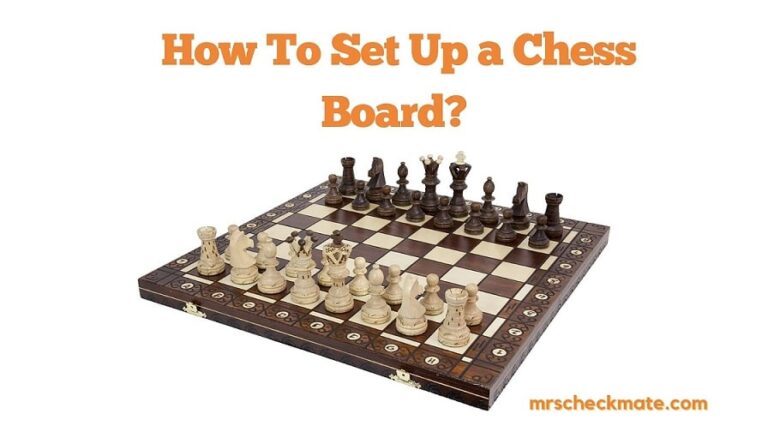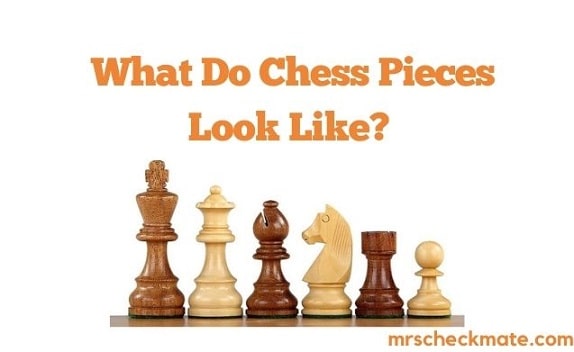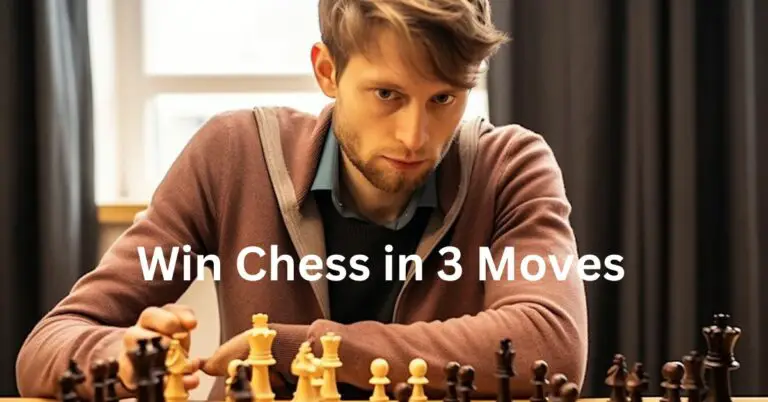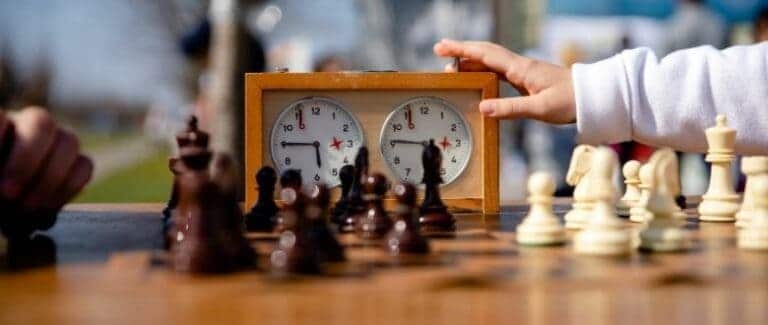Why Is The Knight Important in Chess?
In the game of chess, each piece holds its unique power and strategy. Among them, the knight stands out with its peculiar movement and strategic importance. Often underestimated, the knight’s role in the chessboard’s battlefield is far more significant than it appears.
This article will delve into the importance of the knight in chess, exploring its strengths, weaknesses, and the strategic advantage it can provide to a player who knows how to wield it effectively.
Understanding the Knight’s Movement
The knight, represented by a horse’s head and neck, is a unique piece in the game of chess. Its movement is unlike any other piece on the board, and it holds a significant role in the strategy of the game.
Explanation of the Knight’s Unique ‘L’ Shape Movement
The knight moves in an ‘L’ shape, two squares vertically and one square horizontally, or two squares horizontally and one square vertically. This unique movement pattern allows the knight to alternate between light and dark squares with each move.
Here’s a simple way to visualize the knight’s movement:
| a | b | c | d | e | f | g | h | |
|---|---|---|---|---|---|---|---|---|
| 8 | ||||||||
| 7 | ||||||||
| 6 | 1 | 1 | ||||||
| 5 | 1 | 1 | ||||||
| 4 | N | |||||||
| 3 | 1 | 1 | ||||||
| 2 | 1 | 1 | ||||||
| 1 |
In the table above, ‘N’ represents the knight, and the ‘1’s represents possible moves for the knight.
Importance of the Knight’s Ability to Jump Over Other Pieces
One of the knight’s most powerful abilities is its capacity to jump over other pieces. This ability is unique to the knight and allows it to avoid blockades and reach parts of the board that other pieces cannot. This ability can be particularly useful in closed positions, where the knight’s ability to jump over other pieces can give it a significant advantage.
Key Points:
- The knight moves in an ‘L’ shape, alternating between light and dark squares.
- The knight can jump over other pieces, making it a versatile piece in both open and closed positions.
For a deeper understanding of the knight’s role and its historical significance, you can refer to this Wikipedia article.
Remember, understanding each piece’s movement and capabilities is crucial to improving your chess game. Keep practicing and keep learning!
Strategic Advantages of the Knight
Discussion on the Knight’s Role in Controlling the Center of the Board
The knight, with its unique ‘L’ shaped movement, plays a crucial role in controlling the center of the chessboard. The center is often the battleground where the fate of the game is decided. Controlling the center provides your pieces with more mobility and options, and the knight is a key player in this aspect.
Consider this: from the center of the board, a knight can potentially reach up to eight squares, while on the edge of the board, it can only reach four. This is why you’ll often see players moving their knights toward the center in the opening stages of the game. It’s all about maximizing potential and keeping options open.
For a deeper understanding of how to control the center of the board, check out our article on chess opening principles.

Explanation of the Knight’s Ability to Fork Opponent’s Pieces
One of the knight’s most powerful abilities is the fork. A fork is a tactic where a single piece attacks two or more of the opponent’s pieces at the same time. The knight’s unique movement pattern makes it especially adept at forking.
Imagine this scenario: your knight is threatening both your opponent’s queen and rook. They can only move one piece at a time, meaning you’re guaranteed to capture a high-value piece on your next move. This ability to create high-pressure situations is one of the reasons why the knight is such a valuable piece in chess.
Our chess tips for beginners article provides more insights into tactics like the fork.
Importance of the Knight in Closed Positions
In closed positions, where pawns obstruct many of the potential paths, the knight’s ability to jump over other pieces becomes incredibly valuable. Unlike bishops, rooks, and queens, knights aren’t hindered by obstacles in their path. This makes them particularly potent in closed games, where they can hop around the board, creating threats and disrupting the opponent’s plans.
For more on how to navigate closed positions and other endgame scenarios, take a look at our articles on endgame rook vs pawn and queen vs pawn endgame.
The knight is a versatile and powerful piece, capable of turning the tide of a game. Its unique movement, ability to fork, and effectiveness in closed positions make it a vital part of any chess strategy.
Knight vs. Other Pieces
When it comes to the game of chess, each piece has its unique strengths and weaknesses. The knight, with its distinctive L-shaped movement, is no exception. In this section, we’ll delve into the comparison of the knight with other pieces like bishops, rooks, etc., and explore situations where the knight is more advantageous.
Comparison of the Knight with Other Pieces
The knight, valued at three points, is often compared to other minor pieces such as the bishop and the rook. Here’s a brief comparison:
- Knight vs. Bishop: The knight and the bishop are both valued at three points, but they have different strengths. The knight’s ability to “jump” over other pieces gives it a unique advantage, especially in closed positions. On the other hand, the bishop’s long-range diagonal movement can control both the center and corners of the board, especially in open positions.
- Knight vs. Rook: The rook, valued at five points, is generally considered more powerful than the knight. The rook’s ability to control entire rows and columns can be a significant advantage, especially in the endgame. However, the knight’s ability to reach any square on the board, regardless of color, can sometimes give it an edge in complex positions.
- Knight vs. Queen: The queen, being the most powerful piece on the board, is clearly superior to the knight. However, the knight’s unique movement can sometimes create threats that even the queen can’t easily counter.
Situations Where the Knight is More Advantageous
The knight shines in certain situations. Here are a few scenarios where the knight can be more advantageous:
- Closed Positions: In closed positions, where pawns obstruct many of the potential paths of the pieces, the knight’s ability to leap over other pieces can be a game-changer.
- Complex Positions: The knight’s unique movement can create complex threats that are hard to foresee. This can be particularly useful in positions with multiple tactical possibilities.
- Forking: The knight’s ability to attack two pieces at once (known as “forking”) can often lead to material gain.
- Outposts: If a knight can secure a position where it can’t be attacked by enemy pawns (known as an “outpost”), it can be a powerful asset.
You might find Chess.com’s piece comparison helpful. It provides a detailed analysis of each piece’s strengths and weaknesses.
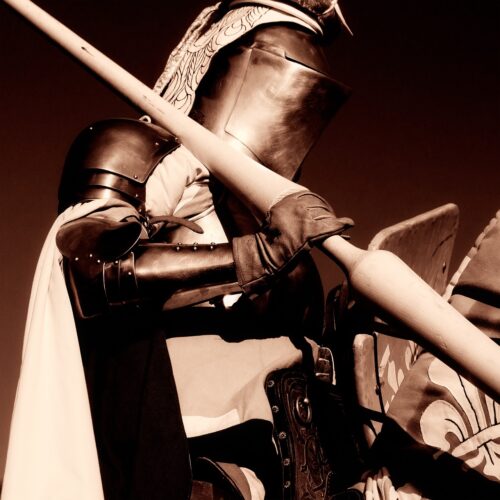
Famous Games Involving Knight Maneuvers
Chess is a game of strategy and tactics, and there are countless games where the knight has played a pivotal role in the outcome. Let’s delve into some of these games and the lessons we can learn from them.
Analysis of Famous Games Where Knights Played a Crucial Role
One such game is the match between Diego Flores and Gabor Papp in 2001. This game played in the Ruy Lopez opening, is a classic example of the knight’s power and versatility. Papp, playing black, used his knight in an impressive display of tactical prowess. His knight maneuvered around the board, creating threats and forcing his opponent to respond. This ultimately led to a win for Papp in just 27 moves. You can view the full game here.
Another game to consider is the famous “Game of the Century” between Donald Byrne and Bobby Fischer in 1956. In this game, 13-year-old Fischer demonstrated the power of the knight with a stunning queen sacrifice followed by a knight check, leading to a brilliant mating net. This game is a testament to the knight’s potential when used creatively. You can read more about this game in our chess prodigies article.
Lessons to Learn from These Games
From these games, we can draw several important lessons:
- Knights are powerful in closed positions: In the Flores vs. Papp game, the board was relatively closed, allowing the knight to shine. Knights can jump over other pieces, making them especially potent in positions where other pieces are blocked.
- Knights can create complex threats: In both games, the knights were used to create multiple threats simultaneously. This is a common tactic known as a ‘fork’, which you can learn more about in our chess tips for beginners article.
- Knights can be worth more than their nominal value: In the Game of the Century, Fischer’s knight was instrumental in trapping Byrne’s king, demonstrating that the value of a piece can change dramatically depending on the position on the board.
Remember, chess is a game of strategy and tactics, and understanding how to use each piece to its maximum potential is key to improving your game. The knight, with its unique movement and ability to create complex threats, is a powerful tool in the hands of a skilled player. So, the next time you sit down for a game, don’t underestimate the power of the knight!
Improving Your Knight Play
In the game of chess, the knight is a unique piece with its ability to leap over other pieces and its ‘L’ shaped movement. Mastering the use of this piece can significantly enhance your gameplay. Here are some tips and strategies to effectively use knights in your games.
Tips and Strategies for Effectively Using Knights
- Centralize Your Knights: Knights are most effective when they are placed in the center of the board. From the center, a knight can reach eight squares, whereas, on the edge of the board, it can only reach four. Try to move your knights towards the center of the board where they can control the most squares.
- Use Knights to Fork Opponents: The knight’s unique movement allows it to fork two or more pieces, creating a powerful tactical threat. Always be on the lookout for opportunities to fork your opponent’s pieces with your knight.
- Knight Outposts: An outpost is a square on the fifth, sixth, or seventh rank which is protected by a pawn and which cannot be attacked by an opponent’s pawn. Knights are excellent pieces to place on outposts. They are safe from attacks and can exert pressure on the opponent’s position.
- Avoid Trading Knights for Bishops in Closed Positions: In closed positions with many pawns, knights are often superior to bishops. They can jump over pawns while bishops can be blocked by them. Avoid trading your knights for bishops in such positions.
- Knight Endgames: Knights are tricky in endgames. They are short-ranged pieces and can struggle to stop distant passed pawns. However, they are excellent at forking kings and pawns. Understanding knight endgames can give you an edge in your games.
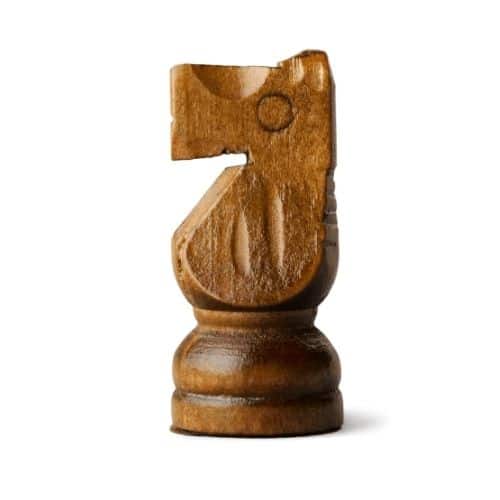
Remember, the key to improving your knight play, like all aspects of chess, is practice. Play lots of games and try to apply these strategies. Analyze your games afterward to learn from your mistakes and successes.
Importance of Practice and Study in Mastering Knight Maneuvers
Chess is a game of strategy and tactics, and the knight is a piece that requires a good understanding of both. The more you play and study chess, the better you will become at using your knights effectively.
One of the best ways to improve your knight play is to study the games of great players. Many chess prodigies have used knights to create beautiful combinations and win games. By studying their games, you can learn how to use your knights more effectively.
Another way to improve your knight play is to solve chess puzzles. Many puzzles involve knight forks and other knight tactics. Solving these puzzles will help you recognize opportunities to use your knights during your games.
Finally, consider using a chess set to physically move the pieces around. This can help you visualize knight maneuvers better than just looking at a screen.
Conclusion
The knight is a unique and powerful piece in chess, offering a range of strategic possibilities. While it has its limitations, understanding and leveraging the knight’s strengths can give you a significant advantage in your games. Whether you’re a beginner or an experienced player, mastering the knight’s movement and strategy can elevate your game to new heights. So next time you set up your chessboard, remember – the knight is not just another piece; it’s a game-changer.
For more insights into the world of chess, explore our other articles on MrsCheckmate. Whether you’re looking to understand how many pieces are there in a chess set or curious about what chess pieces represent, we’ve got you covered. Happy gaming!
FAQ
- Why is the knight’s movement unique in chess?
The knight’s movement is unique because it can ‘jump’ over other pieces and moves in an ‘L’ shape. - What are the strengths and weaknesses of the knight in chess? Knights are strong in closed positions and can create forks, but they are short-ranged and can struggle in endgames against distant passed pawns.
- How does the knight’s role change in different phases of a chess game? In the opening, knights control the center and prepare for forks. In the middle game, they excel in closed positions and on outpost squares. In the endgame, they can create decisive forks with careful maneuvering.
- What is an outpost square, and why is a knight powerful there? An outpost square is a protected square on the opponent’s side of the board where a knight can’t be attacked by pawns. Knights are powerful there because they’re safe from attacks and can exert pressure.
- How can I effectively use the knight in my chess games? To effectively use the knight, develop it early, look for fork opportunities, place it on outpost squares when possible, and practice and study regularly.


